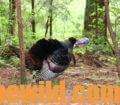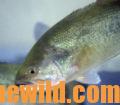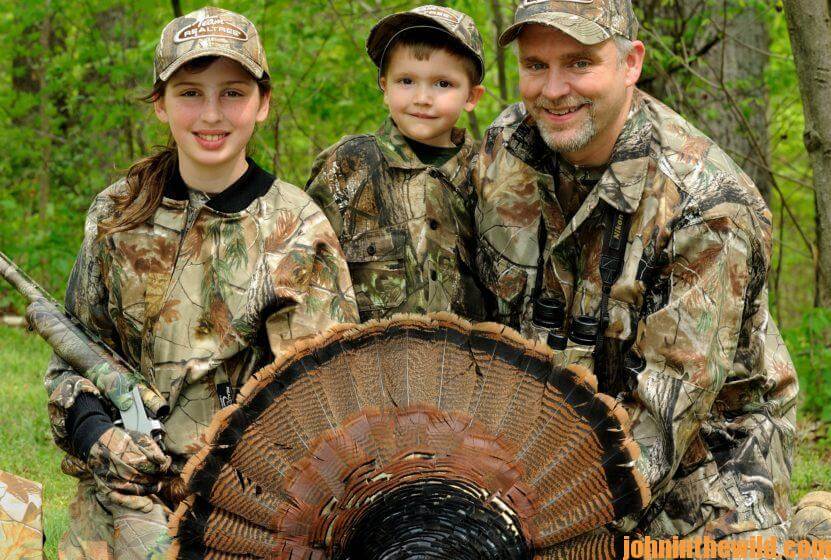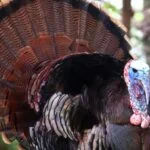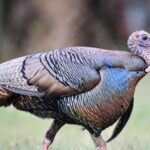Editor’s Note: Alex Rutledge
(https://www.facebook.com/pg/AmericanRootsOutdoors/about/?ref=page_internal) of Birch Tree, Missouri, a master turkey hunter and one of the nation’s top turkey callers, has over 40 years of turkey-hunting experience and teaching about turkeys at seminars. Rutledge knows how to call turkeys, as proved by the many titles he’s accumulated competing in turkey-calling contests over the years, including winning national, regional and state contests. Growing up on a farm and hunting turkeys and other game animals all his life, Rutledge has met several tough-to-hunt turkeys that he considers his professors in the sport of turkey hunting.
1) How do you produce the yelp on a box call?
Rutledge: Usually a beginning turkey hunter will ask this question at a seminar. A variety of box calls can help you produce a yelp. I like a box call that has a patented locking device that locks the lid in place. Then the call won’t squeak, squawk or make any noise until you’re ready to use it. To produce the yelp, take the paddle (the lid of the box), and move the paddle across the top of the box from right to left, if you’re right-handed. The box call is one of the easiest calls that a hunter can use to produce a wild turkey hen’s yelp. The yelp is the basic call that’s used for calling in a gobbler. Most of the time, the yelp will be responsible for bringing in the toms the hunters take. That’s why, if you’re a novice to turkey hunting, I suggest that you learn to make a single yelp on a box call.
2) How do you use an owl hooter?
Rutledge: My fav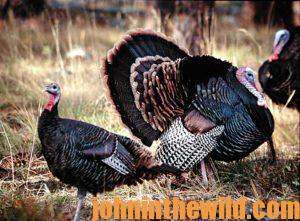 orite is the Palmer’s Grand National Champion Wood Hoot Tube
orite is the Palmer’s Grand National Champion Wood Hoot Tube
(http://www.gamecalls.net/huntingproducts/hs_strut.html ), a call that’s won more national owl-hooting contests than any other owl hooter on the market today. All you have to do is blow air through the call and put your hand over the end of the call to give the call a more-muffled sound. Learning the owl hoot can be as important, if not more important, than learning how to make hen turkey sounds for successful turkey hunting. The owl hooter can be used to locate gobblers and cause them to shock gobble. Then you’ll know where the toms are. Too, you often can determine in which direction turkeys are walking without calling the birds to you. Knowing how to owl hoot and pinpointing the turkey’s location will allow you to take a stand close to the turkey, hopefully in a direction the turkey wants to go.
3) How do you use a diaphragm call?
Rutledge: I suggest that all beginning diaphragm users use a double-reed or a single-reed call because these two calls are the easiest to blow and the easiest to learn to blow. Place the call in the roof of your mouth, and put your tongue against the latex with a seal to keep air from getting over the top of the call. Next, exhale air over your tongue to vibrate your tongue against the latex to make sounds. Then try and simulate the high-low note in a yelp by going, “heeeeeeealk, heeeeeeealk.” Once you learn to control that sound on the diaphragm call, you can make the high and the low notes. Then you speed it up to produce the yelp.
4) Why does a turkey yelp?
Rutledge: A turkey will yelp or cluck for a contact call and is a way for turkeys to communicate with one another.
5) How do you set up to take a tom with hens?
Rutledge: I set-up depending on whether I’m hunting the bird in the early morning or the midday. For example, if I’m hunting a bird on the roost, I’ll set up 100-yards away from the gobbler. I generally do my scouting prior to my hunting. Therefore, I’ll know if any obstacles like fences or creeks are in-between the turkey and the tree. I want to make the gobbler’s coming in to me as simple and as easy as possible without any obstacles between us. So, I’ll set up either level with or above the gobbler with the sun to my back.
6) What do you do when a gobbler you want to hunt already has hens with him?
Rutledge: If I’m hunting a gobbler with hens, I try to get in his comfort zone, which generally is about 100-yards from him, with the sun to my back. I want to get above him if possible to make his coming in to me easier.
7) How do you call to a tom once you’re inside his comfort zone?
Rutledge: The first contact call I’ll make to a bird is generally a soft yelp. I never call really loudly to a gobbler that has hens with him. If you call too aggressively, depending on how far the turkeys are in their breeding cycle, you may push the hens away, and the gobbler will follow them. I’m trying to speak to the gobbler with soft muted/subdominant hen calls to attempt to make contact 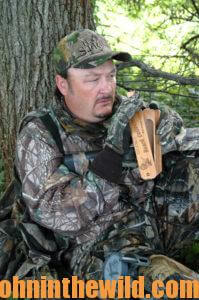 with the gobbler and create interest in my calling with the hens but not be aggressive, which may cause the hens or the gobbler to leave.
with the gobbler and create interest in my calling with the hens but not be aggressive, which may cause the hens or the gobbler to leave.
8) How do you bag a tom when you’re working a bird that’s hung-up?
Rutledge: How I take a turkey depends on the situation and the setup. For instance, if I’ve got a bird that’s hung-up on a hill, I’ll attempt to get him gobbling hard by giving him aggressive cuts and cackles. Then, I’ll shut up calling for a while. When I start back calling, I’ll really tone down my calls like I’ve lost interest in the gobbler. I also want my calling to sound like I’m a hen that’s moving away from him. If the gobbler thinks I’ve lost interest, or I’m moving away from him, the bird will become more curious as to why his gobbling hasn’t impressed me. Then he’ll often come toward me and move close enough for me to get a shot.
9) What do you do when you’re hunting a gobbler that won’t come to you?
Rutledge: I have a tactic that I use that I like to call my ace in the hole. Gobblers, in my opinion, think of two things when it comes to mating. First, they think about fighting; then, they think of the lovesick hens they can entertain. So, I like to use heavy yelping for when he gobbles and thinks of the hen. I’ll gobble to him with a gobble call to make him think a jake gobbler is there. If that tom has any dominance in him, he’ll come in quickly to fight and try to knock the jake gobbler’s lung loose. This technique often works for me because the turkey usually thinks about fighting before he thinks about mating.
10) How can parents get their kids interested in hunting?
Rutledge: The number-one thing, in my opinion that helps kids have an interest in hunting, is if their parents hunt. Parents need to get their children involved in the outdoors, whether they’re starting them fishing, hunting or camping. Parents need to teach youngsters that weapons aren’t dangerous tools, if they’ll use specific safety measures and hunter ethics. The kids will learn to respect their weapons. Also, parents need to train them not to be scared of the weapons and show them that hunting is cool. Kids also need to realize that they can pass on the tradition of family hunting to their kids one day. Also, most importantly, teach them that hunting isn’t about who can kill the biggest animal or the most animals, but rather the purpose of hunting is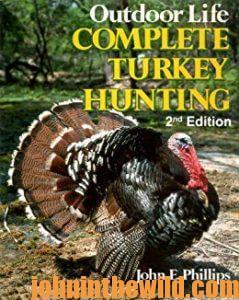 to enjoy the outdoors with someone you love.
to enjoy the outdoors with someone you love.
To learn more about turkey hunting, check out John E. Phillips’s book, “Outdoor Life’s Complete Turkey Hunting,” at http://amzn.to/1fpP4Qu, available in Kindle and print.

